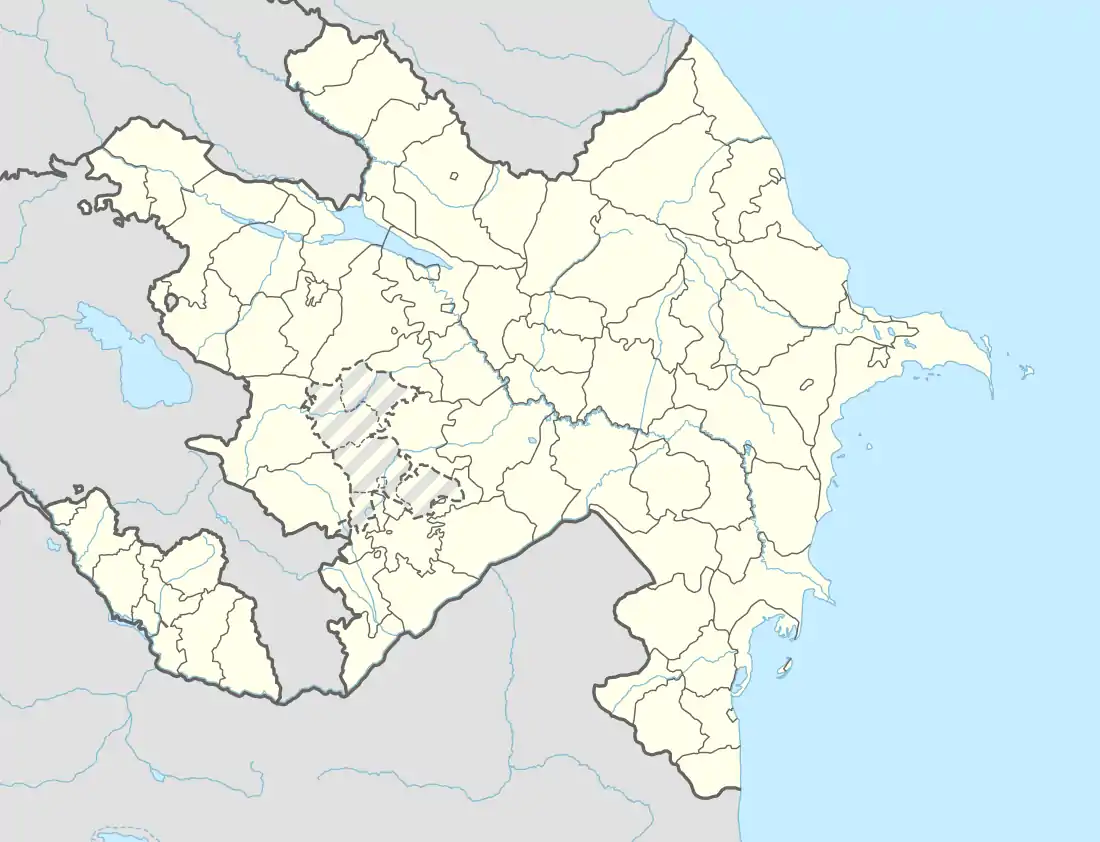Ayrınc
Ayrınc (also Ayrynj, Ayrindzh, until 2003;[1] Arınc, Arindzh, Aryndzh) is a village and municipality in the Shahbuz District of Nakhchivan, Azerbaijan. It is located in the near of the Shahbuz-Kyukyu highway, 3 km in the north from the district center, on the bank of the Kukuchay river (tributary of the Nakhchivanchay river). Its population is busy with gardening and animal husbandry. There are secondary school, library, club, kindergarten and a medical center in the village. It has a population of 546. The Nohur settlement of the Middle Ages is located nearby.[2]
Ayrınc | |
|---|---|
Municipality | |
 Ayrınc | |
| Coordinates: 39°25′41″N 45°35′11″E | |
| Country | |
| Autonomous republic | Nakhchivan |
| Rayon | Shakhbuz |
| Population (2005) | |
| • Total | 546 |
| Time zone | UTC+4 (AZT) |
Etymology
Arınc is the foothill area. In the Turkic languages, Arynj means "hard, reverse, rigid, boring". The name was likely created due to the harsh climate of the available area. Since 2003, the name of the village has officially been registered as Ayrınc for an unknown reason. In the beginning of the 18th century, the Arynja village was registered in the district of Girkhbulag. Acccording to Azerbaijani sources, the Azerbaijanis were deported from the Arnyj village of the Yeghegnadzor region of Armenia in 1948–50."[3]
Historical and archaeological monuments
Nohur
Nohur - the place of residence of the 11-14 centuries, near the Ayrınc village of the Shahbuz rayon, on the left bank of the Ayrınc River. Its area is 1000 m2. The remains of the building are observed in the settlement. The houses built of hewn limestones are the square and rectangular. During the research work in the one of the rooms (6х4 m) have been found the ceramic product of the unglazed (fragments of jug and jar-type containers in the pink and yellowish colored) and glazed (bowl, plate fractures).[2]
Ayrınc Necropolis
Ayrınc Necropolis - the archaeological monument of the Middle Ages in the Ayrınc village of the Shahbuz rayon. Only a part of the a few figure of a ram and a part of the head stones of the graves are remained in the Muslim cemetery. The upper part of the two head stones has been engraved in a similar to the crown. One of these two figures of the simple form rams is spiral-horned. Researchers are assume that the monument belongs to the 15-16 centuries.[2]
References
- Azərbaycan Respublikasının 1 mart 2003-cü il tarixli, 423-IIQ nömrəli Qanunu Archived 2014-03-25 at the Wayback Machine (in Azerbaijani)
- ANAS, Azerbaijan National Academy of Sciences (2005). Nakhchivan Encyclopedia. volume I. Baku: ANAS. p. 45. ISBN 5-8066-1468-9.
- Encyclopedic Dictionary of Azerbaijan Toponyms. In two volumes. Volume I. p. 304. Baku: "East-West". 2007. ISBN 978-9952-34-155-3.
.svg.png.webp)